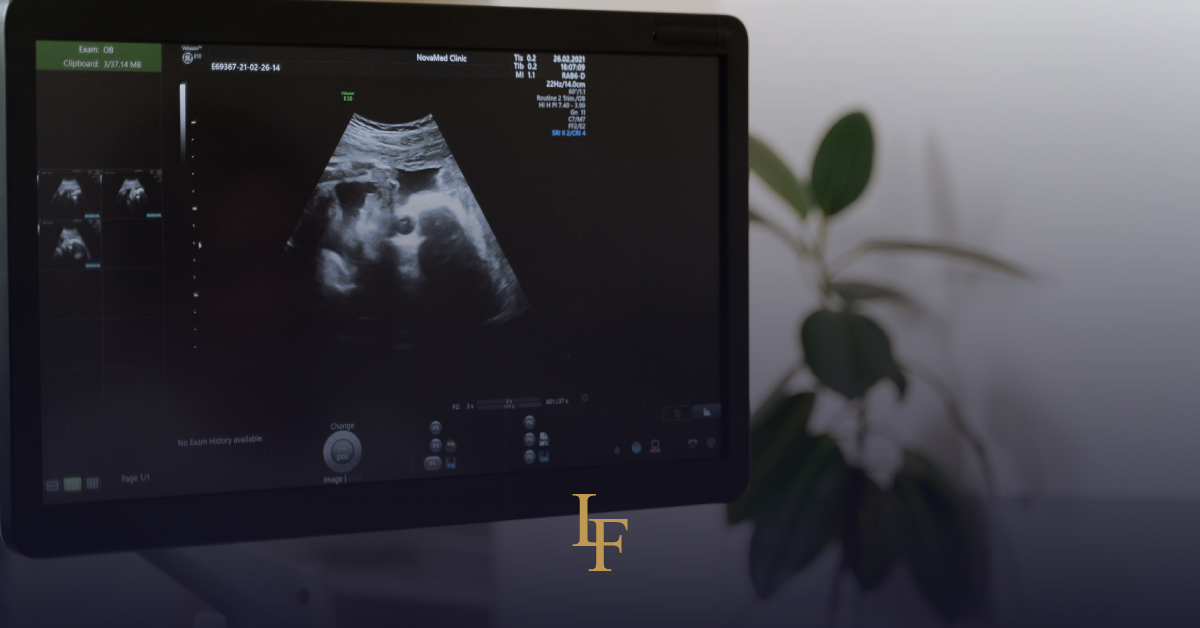It must always be verified whether the conduct, omitted by the doctor, would have prevented or significantly delayed the occurrence of the event
The medical responsibility of the gynecologist which is confirmed by the Court of Appeal which condemns the doctor for the crime of manslaughter referred to inart. 589 cp why, for fault consisting of negligence, imprudence and inexperience, for failing to subject the patient to the necessary gynecological checks in the last month of pregnancy consisting of cardiotocographic traces, blood pressure and weight measurements, as well as blood chemistry tests as well as omitting a timely diagnostic evaluation in an obese subject carrying a twin pregnancy and suffering from pregestional hypertension with concomitant thyroid disease and weight gain in pregnancy, a clinical situation that should have led the gynecologist to favor an emergency caesarean section following the diagnosis of hypersecretory bronchopathy treated only with the prescription of antibiotic drugs, caused the death of the pregnant woman.
The Supreme Court, however, criticized the argumentative path of the Court of Appeal because it proved insufficient and, at times contradictory, in the point of exact identification of a clear etiological link between the conduct charged to the accused and the death event and the identification of the same culpable profiles attributable to the accused.
According to the Supreme College, although the judge of first instance recalls the United Sections Franzese of 2002, both judges of merit do not operate a good governance or the principles stated in this sentence, an unavoidable point of reference in terms of causal link in culpable offenses, nor of all the jurisprudential elaboration that has seen this Court of legitimacy engaged, in the last twenty years, in the matter of medical liability.
The first instance judge and the appellate judge completely omit the cd counterfactual judgment, which can only be, as it was in the case that concerns us, a purely hypothetical judgment, but must instead tend to ascertain, taking as verified the behavior instead omitted, if the latter would have, with a high degree of logical probability, prevented or significantly delayed the occurrence of the event or in any case reduced its damaging intensity.
Medical liability
The Supreme Court recalls a previous ruling in which the accused's liability was excluded, since no proof was obtained that, if they had repeated certain instrumental examinations, they would have arrived with certainty or high probability or a differential diagnosis from the one formulated, which would have allowed to perform the surgery necessary to prevent the death of the patient.
In other words, in the culpable crime of improper omission, the causal relationship between omission and event cannot be considered to exist on the basis of the statistical probability coefficient alone, but must be verified in the same way as a judgment of high logical probability, which, in turn , must be based not only on a deductive reasoning based on scientific generalizations, but also on an inductive judgment about the salvific role of the omitted conduct, elaborated on the analysis of the characterization of the historical fact and focused on the particularities of the concrete case.
The Supreme Court, section IV, in application of the aforementioned principle, considered the decision that had affirmed the existence of the causal link between the anesthetist's omissive conduct, consisting in the failure to monitor the patient's ECG traces during a surgical intervention and in the non-timely detection of cardiac complications arising from asystole, and the serious brain damage caused to it as a result of the delay with which the cardiac massage was performed.
In other words, what the Supreme Court teaches is that, in order to reach a sentence of conviction, one must be able to affirm, in terms of "procedural certainty", that is, of high rational credibility or logical probability that it was precisely that conduct omissive to determine the injurious event (relating to a case of professional negligence of medical responsibility, due to omission, early diagnosis of pulmonary neoplasia caused by superficial or incorrect reading of the radiological report, for which the Court considered the causal link to exist even in the absence of an autopsy investigation).
The contested sentence, although it gives an account of the opinion expressed by the consultants, and compares the scientific knowledge introduced in the process, seems not to take into account the principle expressed by the Supreme Court which, 4, specified that a reason that fails to indicate whether the specific case is governed by guidelines or, failing that, by good clinical-care practices, to evaluate the causal link taking into account the salvific behavior indicated by the aforementioned parameters, or to specify which form of fault it is, if generic or specific fault, possibly in the light of precautionary rules contained in guidelines, if fault due to inexperience, negligence or imprudence, but also a reason in which it is not ascertained whether and to what extent the conduct of the healthcare professional has deviated from guidelines or good clinical-care practices cannot, today, be considered satisfactory nor compliant with law.
Events:
The patient, pregnant at the thirty-seventh week of twins, was admitted to the Clinic on the date agreed with the doctor, her trusted gynecologist (who had followed her throughout her pregnancy) to perform the scheduled caesarean section.
Upon arrival at the clinic, the gynecologist on duty became aware of the seriousness of the situation (the patient presented serious general conditions, gestosis and severe hepatogestosis with tissue necrosis and high blood pressure while one of the fetuses was not feeling the beat) for to whom he decided to proceed immediately to the caesarean section, after subarachnoid spinal anesthesia.
After a short time the woman lost consciousness and had a cardiocirculatory arrest. Once the resuscitation maneuvers were carried out, the cardiac functions resumed, for which the fetuses were extracted, one of which was alive, the other dead due to the "real knot" of the umbilical cord.
Soon after the woman had two other circulatory arrests for which she was rushed to the hospital where the patient died without ever having been discharged from the intensive care unit.
The motivational error of the judges of merit:
The first instance judge had identified the same causes for both the death of the patient and of one of the twins, stating that there were clear indications to anticipate the caesarean section and to broaden the basis of the instrumental investigations and that, anticipating the caesarean section, the patient would not have arrived in the clinic in conditions of cyanosis and dyspnea and the node of the umbilical cord would not be strangled, so that the fetus of one of the twins would not have died either.
The Court of Appeal, on the other hand, differentiates the two deaths.
From the documentation on file, in particular from the traces performed and examined, there is no lack of decelerations, tachycardia or bradycardia of such an extent as to believe that there was fetal suffering and also from the ultrasound check the twins showed signs of fetal well-being, interpreted by a point visually and almost overlapping, a circumstance that would not have emerged if one of the two had been in a hypoxic situation. Therefore, there were no conditions for subjecting the patient to a continuous tracing. which, however, had been correctly monitored with regard to the routes examined.
The good growth of the fetus leads us to affirm with confidence that the only difference between the twins was the presence of the real knot for one of them; such is one unexpected and unpredictable pathology, determined by the closure of the umbilical cord which until then had functioned correctly. The patient was not in a situation of childbirth, a condition in which the cord damage can also be predictable, given the close contractions; otherwise, outside of labor, it is an event strangulation by twisting of the umbilical cord absolutely unpredictable, linked to the movements of the fetus that can lead it to tighten the cord in its spontaneous activity.
According to the Court of Appeal, not being the pc. in the phase of labor, the event was not only absolutely unpredictable but not even diagnosable through particular investigations or through flowmetry.
This assessment is a diagnostic technique whose main purpose is to evaluate the health conditions of the fetus, which could lead to a delay in fetal growth and subsequently to fetal asphyxia, but it is not useful for predicting acute traumatic events, such as those resulting from detachment of the placenta or from pathologies of the funiculus. Fetal deaths linked to these latter events (as per scientific literature) are neither predictable nor therefore avoidable. In light of these considerations, the accused cannot be charged with negligent negligence in relation to the death of one of the twins.
The judges of the burden of merit, on the other hand, validate the assertion of responsibility of the judge of first instance for the death of the patient. but, on this point, the declared unpredictability and inevitability of what happened in the delivery room, which led to the death of the fetus, makes some of the conclusions that led to confirm the sentence for the patient's death contradictory.
The Cassation
The Supreme Court, using an innovative motivational formula, objects that the Court of Appeal erred in the thema decidendum that should have undergone the questions: at the outcome of the path in the office of the accused he was in a situation that required to anticipate the caesarean section scheduled two months later? Did accredited guidelines and / or practices prescribe it in the presence of an obese and hypertensive woman who had bad bronchitis? Was gestosis already diagnosed?
And, on the basis of the United Sections Franzese, anticipating the caesarean section by two days would have prevented the woman with a high degree of rational credibility from developing cardiac arrests? And in what do they find their cause: in gestosis? In hypertension?
The Supreme Court has clarified that the legal relevance of the guidelines - although they continue to constitute recommendations of clinical behavior and even if their identification often constitutes an operation that is anything but easy, also because Law no. 189 of 2012 refers to the "guidelines and good practices accredited by the scientific community", failing to offer any criteria for determining them - it is strengthened after the intervention of the Balduzzi law, and it is necessary to highlight that, should making them assume a value of "judgment parameter", the exact identification of the specific guidelines which the health care worker must follow necessarily represents a fundamental step (medical responsibility).
Having said this, the Supreme Court cancels without postponement the sentence challenged for criminal purposes because the crime is extinguished by prescription.

